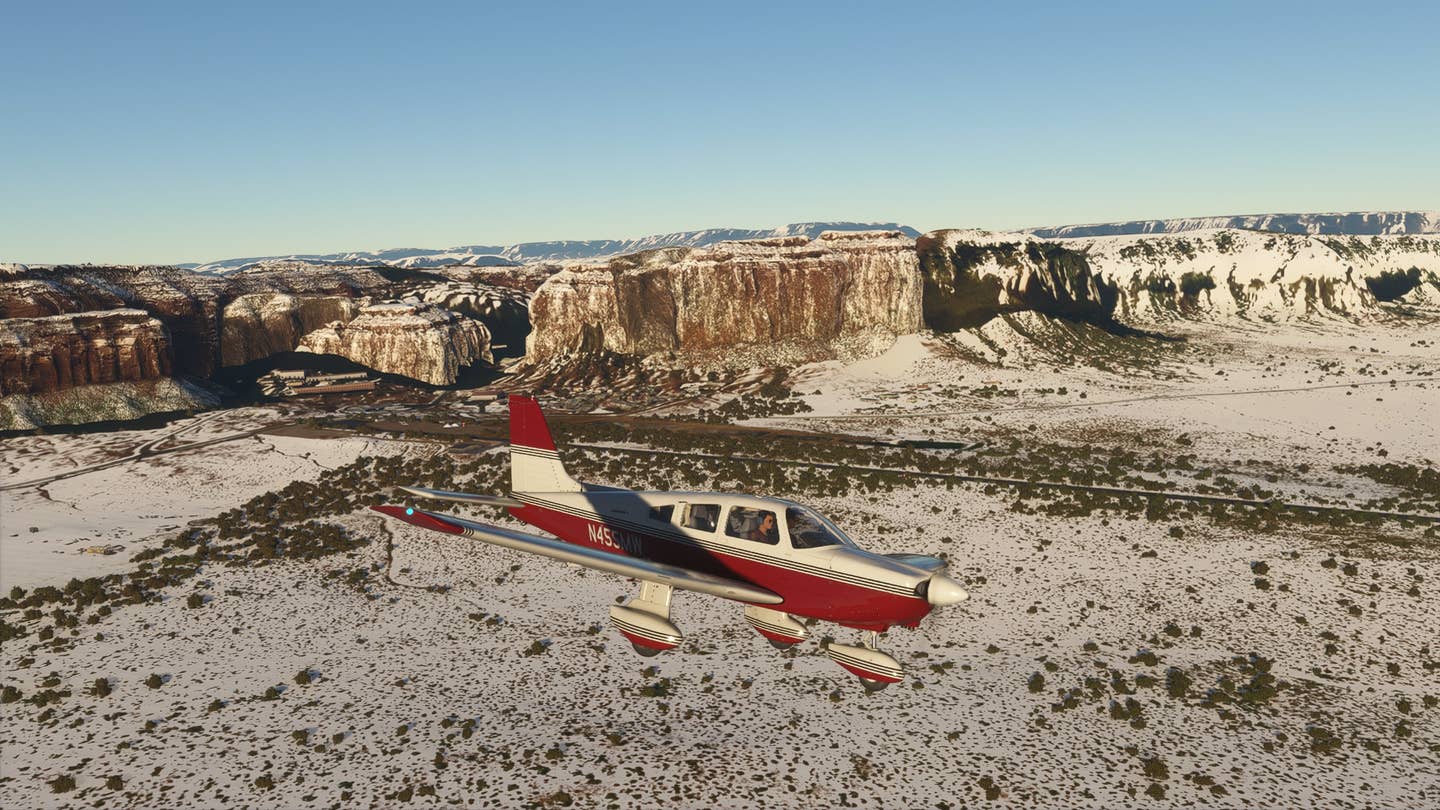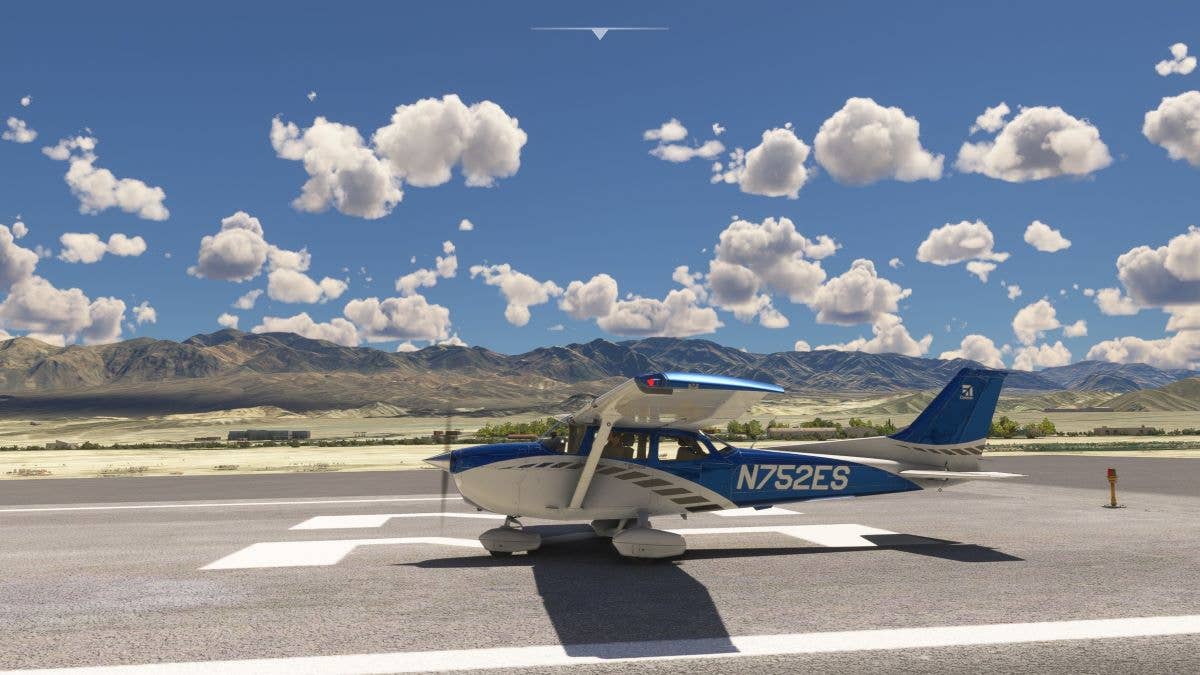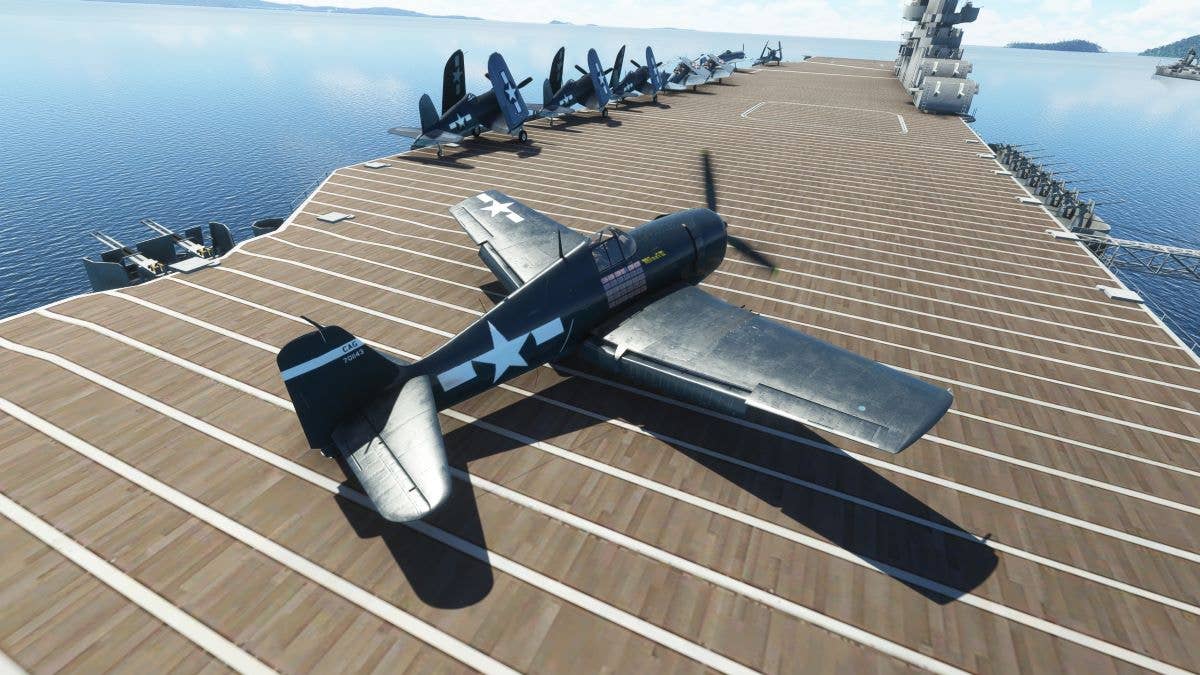Is It Real or a Flight Sim?
Flight simulators and the real world interact so beautifully, it’s hard to tell the difference.

Flight sim imagery has improved
a lot over the years. [Courtesy: Peter James]
We have come such a long way from way back when I started this incredible hobby in 1981. In those days, it was just a grayscale screen with just “sticks and lines,” as my sarcastic older sister would call it. At the time, I treated those “sticks and lines” as amazing scenery, having no idea that the Microsoft Flight Simulator of today would be what it is now.
Today’s version is really what I had always dreamed of. I have taken so many screenshots over the last few years that I would love to publish a coffee table book just to display them. I don’t think I am alone in that sentiment. I have spent a lot of time viewing screenshots other flight simmers have posted on Facebook fan pages.
These screenshots, mine and others, showcase the beauty of this sim. Fellow pilots I share a jet cockpit with are often stunned when I show them scenes from the current MSFS. Many had dabbled with it way back when and never returned generally due to being less than impressed. They ask me, “Isn't that a real picture?”
Here are a few of my favorites.
In this pic, I had manually set the weather to scattered to broken cumulus with unlimited full slider visibility. The west has great clean air—anything less than 100 miles just doesn’t seem right. The later afternoon sky or “golden hour” really makes the colors pop. This was around early April, when some snow remained in places but clearly some greenery was popping in too. MSFS does an amazing job using color and lighting to create this scene. It still absolutely stuns me. I just can’t tell it’s not a real photo. By having this haze-less sky, the colors and contrast really pop to the maximum. As a note, you’ll only find this by manually setting visibility to max and raising the clouds to a height several thousand feet or higher above the ground, which is quite realistic for the western dry climate and thermally driven lift.
Touring around this region is so much fun, from low level to long distance to taking screenshots. For added realism, be sure to drag the visibility sliders to full and also throw in added turbulence as during the day this would be common. Using live weather does a better job of thermals, chop, and low-level winds and shear, but then it is sometimes slightly more hazy, with less color contrast to take photos.
The live weather interpolates where worldwide snow cover is quite accurate, but when taking over total control, it is necessary to set this as well. The sliders allow temperature and associated snow coverage and thickness and are a lot of fun to fiddle with. Perfect for picture taking.
Climbing out from Monument Valley, some massive mesas and cliffs rise sharply about half a mile from the runway. What a great place to practice changing the weather and temperature with various aircraft to see what possibly could go wrong. Having a contest to see if you can clear terrain is always fun and informative.
Low and slow, or actually fast and wild, is perhaps the best way to zoom, roll, and bomb through the canyons, valleys, monuments, natural spires, and flat-topped mesas. With the right airplane, you could certainly land on these places for some foot exploration. With the accurate topographical data worldwide, it’s just amazing how many places there are where you can find a runway. As I fly a jet for a job, my view at FL430 often has me wondering how many places out west, below me at the moment, have been conquered by bush pilots.
Using the same technique for visibility tinkering and cloud manipulation at sunset, I was able to capture this beauty. Whether you’re imitating Tom Cruise’s Maverick character from Top Gun in the F18 or low and slow, this part of the U.S. is perfect for trying anything. In the golden years of jet airline flying, I had heard airline pilots were allowed to fly low level through the canyons and valleys in Boeing 707s or Douglas DC-8s before climbing back up high to the normal cruising altitude.
A few months ago, I featured some of the greatest payware-added airport details you can buy for bush flying. The way the grass, dirt, and camping sites blend together really does make MSFS a bush sim. Even since I wrote that, the continually enhanced weather modeling featuring mountain waves, ridge lift, and thermals has improved the realism–and danger!
For the ultimate challenge, try flying in real time to this part of the world. Nothing can beat the sometimes deadly Lukla Airport (VNLK) in Nepal. The only fast way to get to Mount Everest is this strip. Perched at high altitude and built on a huge slope with only one way in and one way out, this one is difficult at best. I crashed a few times battling wind, downdrafts, and a go-around into the sheer, rock walls that rise thousands of feet on the departure end. After some experimentation, I found the Carenado Pilatus PC-12 (available on www.carenado.com) was great for stopping fast and uphill taxiing. In real life, they bring passengers on Yeti Airlines in twin turboprops. Sadly, it seems a deadly crash occurs here almost every year.
Paro International Airport (VQPR) is featured on many videos. Landing airliners into this spectacular place near the Himalayas is a good stop prior to switching to a smaller aircraft and heading to Lukla or Tribhuvan International Airport (VNKT) in Kathmandu. A steep final approach, twisting past a temple on the mountainside and dealing with winds, downdrafts, and sink rates, is so much fun. Landings must not float, and a bang-on slam down is the only way to get on the ground here! The same thing holds for most high altitude airports that aren’t overly large. I was using an Airbus A319ACJ found on the sim marketplace within MFS itself, the LVFR or LatinVFR brand of Airbus jetliners.
Terrain mapping is absolutely necessary and realistically done with most aircraft in the sim, I love the accuracy and smoothness of this, as it is pretty much identical to what I use in the bizjet I fly for work. Having spent half my professional pilot life without such tools, similar to TCAS now, I realize how I couldn’t live without such technology. Just another layer of safety at work.
You decide! Bush flying in the Rockies with a high lift device wing is a blast as you can challenge yourself to off-airport landings anywhere. Just beware of the icing threat in winter, in and around any clouds. With monster truck-style tires, everything is a runway, even the most inhospitable places on Earth. Frozen lakes, snow-covered fields, and mountain slopes are all solid and will result in pretty realistic physics if you take them on.
Anytime I use the PMDG 737NG product line, I scratch my head over how real the pics look. The shine, lighting, and reflections on all surfaces are tops. Jetliners with interiors add to the camera views and believability. Some aircraft now have full interiors, such as the entire PMDG (www.pmdg.com) product line and many more. Anyone who doesn’t know PMDG hasn’t been in the hobby very long as they started building top-end Boeing jets way back in the early 2000s for the sim.
With so many aircraft to choose from, it’s hard to decide what to fly or photograph next. You can shut down the engines on the Grumman Goose and listen to the wind and waves slapping the hull. You may hear local birds or wildlife as they are all programmed into the sim, depending on your locale. Wave simulation looks beautiful but doesn't really operate like a true boating simulation or water model (not yet anyway, but I think that is improving).
Time to stop. I could easily lose control over all the photos I have taken. It’s like when you show off your baby pics: Everyone likes the first few, then they clearly are not paying attention as you drone on and on…
I hope all the real pilots out there that don’t have PCs or flight sims realize the benefits, realism, fun, and adventure they’re missing. And sometimes the added brain power required to take in the “big picture” effect of your surroundings can keep cobwebs away and help you to feel less rusty if you aren’t flying much in real life.

Subscribe to Our Newsletter
Get the latest FLYING stories delivered directly to your inbox






